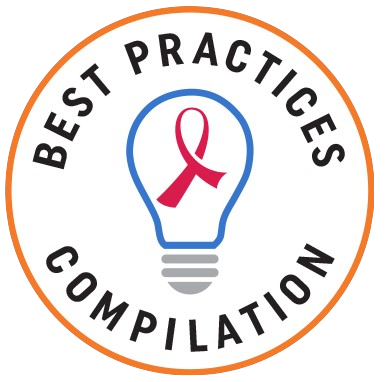Five clinics implemented Tailored Motivational Interviewing (TMI) to better serve young people with HIV as part of a Ryan White HIV/AIDS Program (RWHAP) Part F Special Projects of National Significance (SPNS) initiative. Motivational interviewing (MI) is a well-documented approach to engage youth in care and facilitate behavior change in a variety of contexts. Clients participating in this intervention received integrated HIV medical care and TMI, and demonstrated improved engagement in care and health outcomes.
Los Angeles, CA
Ft. Lauderdale, FL
Baltimore, MD
Detroit, MI
Philadelphia, PA
Youth (ages 13–24 years) consistently make up about one-fifth of estimated new HIV diagnoses in the United States each year, and have lower rates of testing, diagnosis, treatment engagement, and viral suppression than adults with HIV.1 The TMI intervention uses evidence-based motivational interviewing strategies to promote intrinsic behavior change in youth with HIV, through the provision of an environment of acceptance, compassion, and autonomy.2 TMI helps to address the challenges faced by youth who have received a new HIV diagnosis by assisting them to better utilize the health care system and to address psychosocial barriers to HIV care and medication adherence.
"They really feel a difference when someone interacts with them in a motivational interviewing style. We hear them tell us ‘this is the first time I felt listened to’ or ‘this is the first time I didn’t feel judged."
In the initial pilot for this project, clients participated in two 30-45 minute motivational interviewing sessions to discuss retention in care and to develop a care plan highlighting health goals and barriers. When the project was scaled up, youth in the intervention group participated in four sessions to work toward two behavior goals identified during screening for the intervention. Each of the first two sessions was dedicated to discussing a goal and providing tailored feedback on strategies to initiate behavior change. The last two sessions reviewed progress, discussed and addressed barriers, and helped participants focus on maintaining positive behaviors.
Sites completed a detailed assessment of current procedures, and staff knowledge, capacity and training needs. All staff who interact with clients received at least some training on TMI, and the TMI developers partnered with a consulting firm to develop detailed training curricula. The current adaptation of the TMI intervention involves an initial 12-hour skills workshop that engages staff in group and role-playing activities, and an intensive six-month training period where staff participate in virtual role-playing exercises twice a month and additional coaching sessions as needed.
Across the five demonstration sites, 186 youth were enrolled in a randomized controlled trial: 94 in the intervention group (MI plus HIV medical care) and 92 in the control group (HIV medical care only). Youth randomized to intervention showed a significant decline in viral load at 6 months post-intervention compared with youth in the control group; differences were no longer significant at 9 months.
| Category | Information |
|---|---|
| Evaluation data |
|
| Measures |
|
| Results |
* statistically significant |
Source: Naar-King S, Parsons JT, Murphy DA, et al. Improving health outcomes for youth living with the human immunodeficiency virus: a multisite randomized trial of a motivational intervention targeting multiple risk behaviors. Arch Pediatr Adolesc Med. 2009;163(12):1092-1098.
- Pre-implementation assessments. Sites completed an internal assessment to better understand their youth population, establish standardized data measures and procedures to monitor the intervention, and understand current staff readiness and needs. The TMI intervention requires staff to learn new communication strategies and incorporate them into day-to-day work.
- Securing staff buy-in. Organizational leadership and existing staff were brought in and informed of training and time requirements, and relationships with other stakeholders were developed to ensure that comprehensive care is available to clients. Leaders should secure buy-in by highlighting existing TMI resources and advantages associated with the intervention, as well as start implementation with clients who are already engaged in services.
- Staff training. Staff were assessed for current MI experience and trained by the Motivational Interviewing Network of Trainers (MINT). All staff who interact with youth should receive at least basic training on TMI, including staff with prior experience with MI.
- Monitoring and quality improvement. Sites monitored implementation to identify and address any barriers using a variety of approaches. Some engaged external facilitators for monitoring, while others relied on internal processes.
- At least six months of ongoing work in implementing TMI is necessary for staff to develop competency in the intervention and provide effective coaching to clients.
- Fidelity measures that assess how closely the implementation adheres to protocols can help ensure ongoing quality of the intervention. Measurement that is too complex is not feasible for real-world implementation. Researchers found that recording patient-provider interactions was not feasible, but a standard patient interaction model used by trainers/coaches was an effective alternative to fidelity measurement.
- Some sites may need or wish to augment staff capacity through hiring. Evidence suggests that engaging peer staff in conducting the TMI intervention improved outcomes even more than engaging other types of staff (such as masters- and doctoral-level counselors). If possible, peer staff should represent the youth served by the clinic implementing the intervention.
- Establishing Communities of Practice (CoPs) can be effective in sharing knowledge, tools, resources, and best practices when implementing the TMI intervention. CoPs may also help to offset or lower costs associated with the training components of this intervention.
- Using an evaluation framework like Exploration, Preparation, Implementation and Sustainment (EPIS) can be a valuable tool when replicating the intervention.
- Centers for Disease Control and Prevention. HIV in the United States by Age. 2020
- Naar S, MacDonell K, Chapman JE, et al. Testing a motivational interviewing implementation intervention in adolescent HIV clinics: Protocol for a Type 3, Hybrid Implementation-Effectiveness Trial. JMIR Research Protocols. 2019; 8(6):e11200. doi: 10.2196/11200

